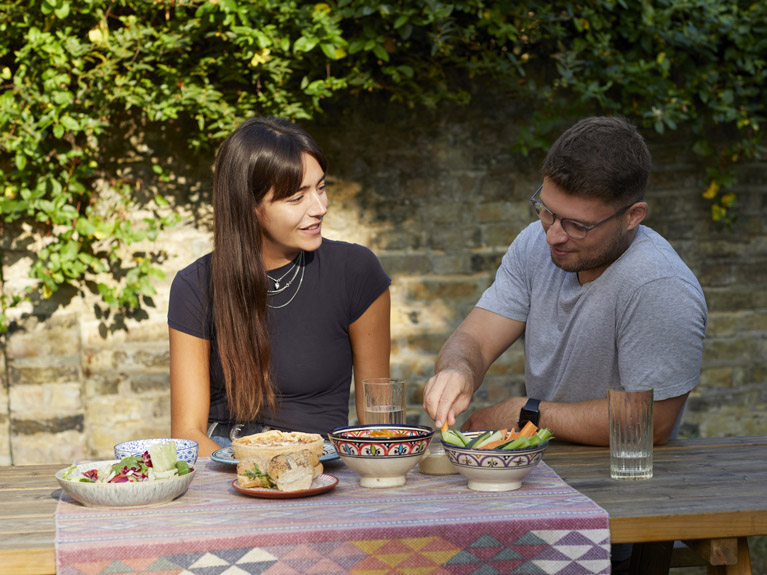Helping you be money well
Our Financial Wellbeing blog series

Why financial wellbeing matters
June 2025
We hear the phrase “financial wellbeing” more and more these days, but what does this really mean and why is it so important? In this month’s blog, we unpack what financial wellbeing is, why it’s important to spend time focusing on your financial wellbeing, and what resources we have available to help you.

Women and numeracy: tackling the confidence gap
May 2025
Dealing with numbers is a key part of our everyday lives. However, numeracy levels across the UK are generally below average for developed countries, and so low numeracy skills and/or confidence is common and can have a negative impact on how individuals understand their finances and make an effective financial plan.
Research has found that low number confidence is an issue that impacts women more than men. So we’re looking to understand more about this gender number confidence gap and what can be done to help close it.

The importance of saving into your pension early
April 2025
We understand that for many, pensions and retirement seem like a long way off and other aspects of your finances take priority in the short to medium term. But it’s important to start saving into your pension early, so that you have longer to save towards your desired retirement lifestyle.

International Women’s Day: championing financial empowerment
March 2025
While we celebrate the progress made over recent years to empower and inspire women in various aspects of their lives, we continue to recognise the ongoing need to address the unique challenges women encounter. In this month’s blog, we focus on the challenges that arise through the gender pension gap, the gender investment gap and the gender protection gap.

What happens to your pension savings when you die?
February 2025
We understand you might not want to think about it, but it’s important to be aware of what happens to your pension savings when you die, so you can prepare to pass on your savings to your loved ones.

How much should I be saving into my pension?
January 2025
Find out the steps you can take to help you determine how much you should be saving into your pension based on your retirement lifestyle goals.

Tips to help you talk about money
November 2024
We know money is often considered a taboo subject. But given most aspects of our lives are affected by our finances in some way or another, not talking about money can cause problems. Learn some tips to help you start meaningful conversations about money with your friends and family.

The financial impact of cancer and support from Macmillan Cancer Support
October 2024
As well as the physical challenge of cancer and cancer treatment, most people find that a cancer diagnosis comes with an unexpected impact on their finances. Find out the various ways Macmillan Cancer Support can support people through these challenges times.

A Journey to Pension Confidence: Navigating Pension Engagement Season
September 2024
Find out our top tips to help you keep on top of your pension this Pension Engagement Season.

A Journey to Pension Equality
August 2024
Learn more about the disability pension gap, including what factors contribute to the gap and steps that can be taken to reduce it.

A Journey of Financial Literacy: Empowering Parents and Children
June 2024
Find out how we navigate the vital steps towards financial literacy for the next generation to ensure they are well-equipped to make informed financial decisions throughout their lives.

A journey to Mindfulness
May 2024
Find out how powerful practising mindfulness can be, and the positive impact it can have on your mental health and planning for your retirement.

A journey to closing the gender number confidence gap
April 2024
Learn more about the gender number confidence gap and find out what you can do to improve your numeracy confidence, raise awareness and close the gap.

A journey to Financial Equality this International Women's Day
March 2024
Discover how International Women's Day serves as a platform to champion financial inclusion for women, empowering them to thrive in all aspects of life.

Financial Planning in 2024: an interview with Schroders Personal Wealth
January 2024
To help you manage your money in 2024 we spoke with an expert from Schroders Personal Wealth to get their top tips for creating a personal financial plan.

A journey of conversations about money
November 2023
Hear from people like you and learn how talking about money can be beneficial to you and your loved one's overall health and wellbeing, as well as tips to help you start conversations about money with friends and family.
Explore our lessons

Taking on your pension
Learn how to get the most from your pension, no matter where you're starting.
- Pensions basics
- Am I on track?
- Combining your pensions
- Retirement options
- And more...

Financial essentials
Get to grips with the basic pillars of money management, including:
- Budgeting
- Saving
- Debt and credit
- Investing
- Protecting your future

Life's money moments
Put yourself in the best possible financial situation to prepare for life's events, like:
- Home purchase
- Getting married
- Bereavement
- Redundancy
- And more...